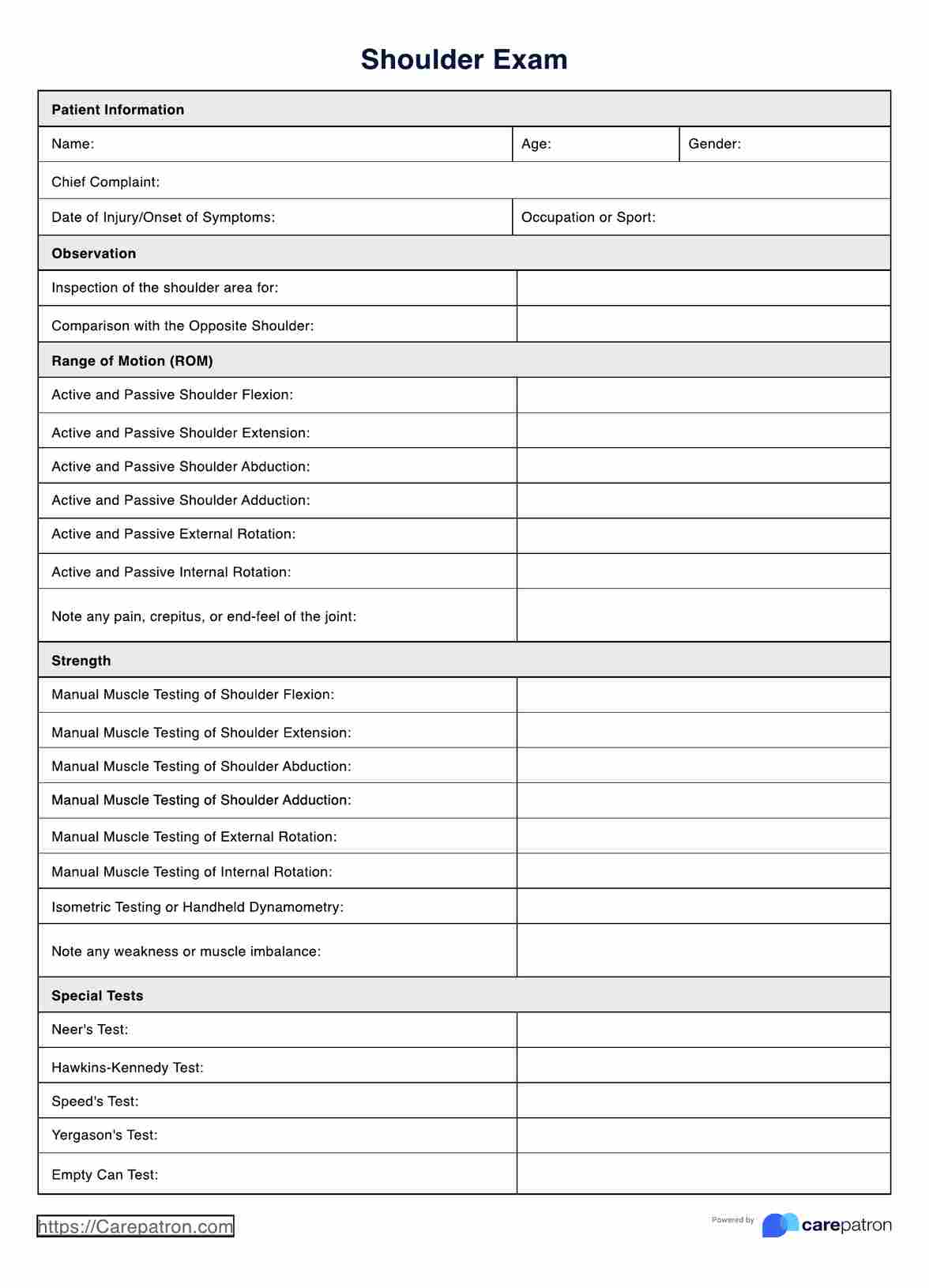The free Shoulder Exam is designed for healthcare professionals, particularly physical therapists, orthopedic specialists, and rehabilitation professionals who assess and treat shoulder conditions.

Shoulder Exam
Learn how physical therapists conduct a shoulder exam using a sample assessment tool. Find out how they diagnose and treat shoulder injuries and pathologies.
Shoulder Exam Template
Commonly asked questions
Utilizing the Shoulder Exam is straightforward. Healthcare professionals can access the pre-designed assessment tool, follow standardized instructions and scoring provided, and tailor the examination based on individual patient needs.
Yes, the Shoulder Exam's reliability is upheld by its standardized design, which incorporates objective measurement tools and comprehensive assessments. It is a dependable resource for healthcare professionals to efficiently evaluate and diagnose various shoulder conditions.
EHR and practice management software
Get started for free
*No credit card required
Free
$0/usd
Unlimited clients
Telehealth
1GB of storage
Client portal text
Automated billing and online payments











